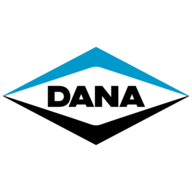I thought the general consensus was engines that were soft down low in the rpm band was a lack of torque.
But I've been noticing that built engines of all type even high rpm still make decent power down low generally far better than a stock low power version of itself some on par or better than a mild built engine with low end power in mind. So I'm guessing there's something besides power.
This ain't about my car in particular but bottom end in general but as an example I'll use my car.
I got a 380hp crate engine with a 2800 stall and 2.xx something gears but lugs in 3rd under about 35 mph so I drive in 2nd intown no big deal. Here's an article where they dyno it makes 409hp @ 5400 rpm and 439.5tq @ 4100 rpm but at 2500 rpm it still makes 181hp/380.6tq which should be more than enough power in 3rd, that's better than a stock 318 at peak power. A stock 5.9l long block with 4bbl and 360 manifolds makes 314hp @ 4600 rpm and 407.1tq @ 3500 rpm and at 2500 rpm 185hp/398.5tq so about the same and even though it don't show it I can't see it even at 1500 rpm or so being much different. I know we're not just talking full throttle runs here but there's half throttle dyno runs making 80% of the power and more important similar power curve.
360 Crate Engine Buildup & Dyno - Mopar Muscle Magazine
Here's the stock 5.9L with different exhaust
Installing Exhaust Headers Into 300hp Crate Engine - Mopar Muscle Magazine
So I can't see it be a power issue seems to be more than enough power available, my guess it would be something to do with cam overlap? something makes it lug and makes it feel soft, yes I know gears and a better stall would fix if but why if both engines are making same power down low why does it act so different? A /6 makes way less power and would have no problem.
But I've been noticing that built engines of all type even high rpm still make decent power down low generally far better than a stock low power version of itself some on par or better than a mild built engine with low end power in mind. So I'm guessing there's something besides power.
This ain't about my car in particular but bottom end in general but as an example I'll use my car.
I got a 380hp crate engine with a 2800 stall and 2.xx something gears but lugs in 3rd under about 35 mph so I drive in 2nd intown no big deal. Here's an article where they dyno it makes 409hp @ 5400 rpm and 439.5tq @ 4100 rpm but at 2500 rpm it still makes 181hp/380.6tq which should be more than enough power in 3rd, that's better than a stock 318 at peak power. A stock 5.9l long block with 4bbl and 360 manifolds makes 314hp @ 4600 rpm and 407.1tq @ 3500 rpm and at 2500 rpm 185hp/398.5tq so about the same and even though it don't show it I can't see it even at 1500 rpm or so being much different. I know we're not just talking full throttle runs here but there's half throttle dyno runs making 80% of the power and more important similar power curve.
360 Crate Engine Buildup & Dyno - Mopar Muscle Magazine
Here's the stock 5.9L with different exhaust
Installing Exhaust Headers Into 300hp Crate Engine - Mopar Muscle Magazine
So I can't see it be a power issue seems to be more than enough power available, my guess it would be something to do with cam overlap? something makes it lug and makes it feel soft, yes I know gears and a better stall would fix if but why if both engines are making same power down low why does it act so different? A /6 makes way less power and would have no problem.
Last edited:


















